-
杉木(Cunninghamia lanceolata)是我国南方特有的速生、材质优良用材树种,人工栽培已有1000多年历史,广泛应用于建筑、桥梁、造船、家具制造、装饰装潢等方面[1-3]。林木的生长与土壤关系密切,不同层次土壤养分不同,其肥力特性也不同[4]。有机碳C和全氮N是表示土壤肥力状况的指标,只有适宜的C/N比,才能保证土壤微生物的活力,从而提高土壤的肥力水平[5-6]。随着连栽次数增多,土壤剖面A层厚度及A+B层总厚度都逐渐缩小,致使土壤养分贮量从头耕土到三耕土有机质普遍下降到原来的66.0%~70.0%[7],也由于炼山造林等一些营林抚育措施也造成了林地土壤养分的流失[8],鉴于此,采用盆栽方法对杉木第3代种子园实生轻型基质容器苗生长与不同层次土壤之间相关性研究,以期为杉木人工林精准施肥推广产业化应用提供参考。
-
试验地设在福建省沙县官庄国有林场罗溪管护站(117°45'E、26°32'N),属亚热带海洋性季风气候,温暖湿润,雨量充沛,四季分明,年均降水量 1 747 mm,年均气温19. 8℃,1 月最低月平均气温4.9℃,7月最高月平均气温35.3℃,年均相对湿度 81. 1%。极端最低气温−7.1℃,极端最高气温40.1℃,年无霜期300 d[9]。
-
试验苗为福建省沙县官庄国有林场杉木第3代种子园实生轻型基质容器苗,2021年1月选取长势均匀良好的杉木容器苗移栽于美植袋中,美植袋规格 25 cm×25 cm (直径×高),每盆种1株,每种土壤种植100株,共计300株。2021年12月对3个不同层次土壤容器苗测量苗高和地径。供试土壤来自杉木林分中的3个表层土壤,即A层:0~20 cm、B层:20~40 cm和C层:40~60 cm土壤。
-
(1)土壤有机碳C、全N测定
土壤有机碳C、全N测定:利用杜马斯高温燃烧法进行测定。将土壤样品烘干磨细并通过100目筛后,利用元素分析仪( VarioMicrocube;Elementar,Hanau,Germany)测定土壤有机碳C和全N,并计算土壤 C:N比[10]。
(2)生长指标测定
2021年12月对不同层次土壤培育的杉木轻型基质容器苗每株测定苗高和地径,地径用游标卡尺测量,如测量的部位出现膨大或干形不圆,则测量其上部苗干起始正常处,量取地径时,应使游标卡尺的两个脚尽量少挤压苗木,还要保持相同力度;苗高有钢卷尺或直尺测量,自地径沿苗干量至顶芽基部,并计算出苗木高径比[11]。
-
采用SPSS 19.0 统计软件进行单因素方差分析和相关性分析,检验相关指标的差异显著性[12]
-
由表1可知,不同层次土壤有机碳C、全N含量最高的是A层土壤,含量分别为19.4 g·kg−1和1.2 g·kg−1,其次是B层土壤,含量分别为16.7 g·kg−1和1.1 g·kg−1,C层土壤含量最少,含量分别为3.8 g·kg−1和0.5 g·kg−1,A层土壤与B层土壤和C层土壤有机碳C、全N含量减少幅度分别为13.9%、80.4%和8.3%、58.3%。3个不同层次土壤C/N比大小顺序为A层土壤>B层土壤>C层土壤。
土壤养分
Soil nutrient有机碳C/(g·kg−1)
Soil organic carbon content /g·kg−1全氮N/(g·kg−1)
Total nitrogen content /g·kg−1C/N比
C/N ratioA层(0~20 cm)
Layer A (0~20 cm)19.4±2.1a 1.2±0.1a 15.5±0.8a B层(20~40 cm)
Layer B (20~40 cm)16.7±0.9b 1.1±0.1b 15.3±0.6a C层(40~60 cm)
Layer C (40~60 cm)3.8±0.3c 0.5±0.1c 7.8±1.1b 注:同列不同小写字母表示处理之间差异性极显著, P<0.05。 Note: Different lowercase letters in the same column show significant differences (P< 0.05) Table 1. Contents of soil organic carbon C and total N in different layers of soil
3个不同层次土壤有机碳C、全N和C/N比方差分析结果见表2,不同层次土壤之间有机碳C、全N和C/N比存在极显著差异,为研究不同层次土壤之间有机碳C、全N和C/N比差异性,对不同层次土壤有机碳C、全N和C/N比进一步开展LSD多重比较,结果见表3~5,A层土壤(x1)、B层土壤(x2)和C层土壤(x3)。由表3可知,A层土壤、B层土壤与C层土壤有机碳C之间差异显著;由表4可知,A层土壤与B层土壤全N之间差异不显著,A层土壤、B层土壤与C层土壤全N之间差异显著;由表5可知,A层土壤与B层土壤C/N比之间差异不显著、A层土壤、B层土壤与C层土壤C/N比之间差异显著。
性状
Characteristics变差来源
Source of variation离差平方和
Sum of squares of deviations自由度
Freedom均方
Mean squareF 显著性
Significance有机碳C
Soil organic carbon重复 Repetition 415.162 2 207.581 117.130 0.000 土壤 Soil 10.633 6 1.772 全N
Total nitrogen重复 Repetition 0.887 2 0.443 49.875 0.000 土壤 Soil 0.053 6 0.009 C/N比
C/N ratio重复 Repetition 116.596 2 58.298 73.279 0.000 土壤Soil 4.773 6 0.796 Table 2. Variance analysis of soil organic carbon content and total nitrogen contents at different layers
性状
Characteristics处理
Treatment均值/(g·kg−1)
Average value|xi−x2| |xi−x3| 有机碳C
Soil organic carbonA层(0~20 cm)
Layer A (0~20 cm)19.4 2.7* 15.6* AB层(20~40 cm)
Layer B (20~40 cm)16.7 12.9* C层(40~60 cm)
Layer C (40~60 cm)3.8 *表示0.05水平上差异显著。
* indicates a significant difference at the level of 0.05.Table 3. Multiple comparison of soil organic carbon at different layers
性状
Characteristics处理
Treatment均值/(g·kg−1)
Mean value / g·kg−1|xⅰ−x2| |xⅰ−x3| C/N比
C/N ratioA层(0−20 cm)
Layer A (0−20 cm)15.5 0.2 7.7* B层(20−40 cm)
Layer B (20−40 cm)15.3 7.5* C层(40−60 cm)
Layer C (40−60 cm)7.8 *表示0.05水平上差异显著。
* indicates a significant difference at the level of 0.05Table 5. Multiple comparison of soil C/N in different layers of soil
性状
Characteristics处理
Treatment均值/(g·kg−1)
Mean value / g·kg−1|xi−x2| |xi−x3| 全N
Total N contentA层(0−20 cm)
Layer A (0−20 cm)1.2 0.2 0.7* B层(20−40 cm)
Layer B (20−40 cm)1.1 0.6* C层(40−60 cm)
Layer C (40−60 cm)0.5 *表示0.05水平上差异显著。
* indicates a significant difference at the level of 0.05Table 4. Multiple comparison of total N in different layers of soil
-
由表6可知,杉木轻型基质容器苗在不同层次土壤中盆栽1年时,3个不同层次土壤幼苗高、地径生长量最大的是A层土壤,其苗高、地径均值分别为85.9 cm、16.8 mm,其次是B层土壤,其苗高、地径均值分别为75.6 cm、14.5 mm,苗高、地径生长量最小的是C层土壤,其苗高、地径均值为75.0 cm、13.4 mm;3个不同层次土壤高径比值最大的是C层土壤,其高径比均值为55.8,表现苗木纤细,高径比值最小的是A层土壤,其高径比均值为51.5,3个不同层次土壤高径比大小顺序为C层土壤>B层土壤>A层土壤;就变异系数而言,A层土壤苗高变异系数最小为3.8%,说明A层土壤苗木单株间高度生长较整齐,C层土壤地径和高径比变异系数最小为3.0%和7.9%,说明C层土壤苗木单株间粗度生长和整体性较整齐,3个不同层次土壤苗高变异系数大小顺序为B层土壤>C层土壤>A层土壤,3个不同层次土壤地径变异系数大小顺序为A层土壤>B层土壤>C层土壤,3个不同层次土壤高径比变异系数大小顺序为B层土壤>A层土壤>C层土壤。
立地土壤
Source of soil苗高 Seedling height 地径 Ground diameter 高径比 Height to diameter ratio 均值/cm
mean value /cm标准差
Standard deviation变异系数/%
Coefficient of variance均值/mm
mean value /mm标准差
Standard deviation变异系数/%
Coefficient of variance均值
mean value标准差
Standard deviation变异系数/%
Coefficient of varianceA层
Layer A85.9 3.3 3.8 16.8 1.2 7.1 51.5 4.1 8.0 B层
Layer B75.6 7.3 9.7 14.5 0.5 3.4 52.3 6.8 13.0 C层
Layer C75.0 5.7 7.6 13.4 0.4 3.0 55.8 4.4 7.9 Table 6. Growth status of Chinese fir seedlings in light substrate container in different layers of soil
3个不同层次土壤杉木轻型基质容器幼苗高、地径和高径比方差分析结果见表7,不同层次土壤之间幼苗高和高径比之间差异不显著,地径生长存在极显著差异,为研究不同层次土壤之间地径生长差异性,对不同层次土壤地径生长进一步开展LSD多重比较,结果见表8,A层土壤(x1)、B层土壤(x2)和C层土壤(x3)。地径生长最优的是A层土壤均值为16.8 mm,其次为B层土壤均值为14.5 mm、C层土壤均值为13.4 mm,其中A层土壤与B层土壤和C层土壤地径均值之间差异显著(P<0.05),B层土壤与C层土壤地径均值之间差异不显著(P>0.05)。
性状
Characteristics变差来源
Source of variation离差平方和
Sum of squares of deviations自由度
Freedom均方
Mean squareF 显著性
Significance苗高
Seedling height重复Repetition 226.029 2 113.014 3.488 0.099 土壤Soil 194.433 6 32.406 地径
Ground diameter重复 Repetition 17.387 2 8.693 15.281 0.004 土壤Soil 3.413 6 0.569 高径比
Height to diameter ratio重复 Repetition 32.247 2 16.123 0.589 0.584 土壤 Soil 164.333 6 27.389 Table 7. Variance analysis of Chinese fir seedling growth in light substrate container in different layers of soil
性状
Characteristics处理
Treatment均值/cm
Mean value /cm|xi−x2| |xi−x3| 地径
Ground diameterA 16.8 2.3* 3.3* B 14.5 1.1 C 13.4 *表示0.05水平上差异显著。
* means that the difference is significant at the level of 0.05.Table 8. Multiple comparison of ground diameter of Chinese fir seedlings in light substrate container IN different layers of soil
综合以上分析,A层土壤杉木轻型基质容器苗生长最高,地径最粗,其次为B层土壤杉木轻型基质容器苗,均优于C层土壤。
-
由表9可知,苗高与地径、高径比、有机碳C、全N和C/N比均呈正相关;地径与有机碳C、全N均呈显著正相关,与C/N比呈正相关,与高径比呈负相关;高径比与有机碳C、全N和C/N比均呈负相关;有机碳C与全N、C/N比呈极显著正相关;全N与C/N比呈极显著正相关。
性状
Characteristics苗高
Seedling height地径
Ground diameter高径比
Height to diameter ratio有机碳C
Organic carbon全氮N
Total NC/N比
C/N ratio苗高 Seedling height 1 地径 Ground diameter 0.571 1 高径比 Height to diameter ratio 0.359 −0.558 1 有机碳C Organic carbon 0.450 0.733* −0.409 1 全氮N Total N 0.422 0.767* −0.480 0.983** 1 C/N比 C/N ratio 0.450 0.659 −0.316 0.967** 0.910** 1 * 表示显著水平为0.05,即P<0.05;** 表示显著水平为0.01,即P<0.01
* indicates that the significant level is 0.05, that is P < 0.05; ** indicates that the significant level is 0.01, that is P < 0.01Table 9. Correlation analysis of various characteristics index of Chinese fir seedlings in light substrate container
-
试验用的3个不同层次土壤有机碳C和全氮N含量明显不同,随着土壤深度的增加而减少,A层土壤中有机碳C、全N和C/N比分别为19.4 g·kg−1、1.2 g·kg−1和15.5;B层土壤中有机碳C、全N和C/N比分别为16.7 g·kg−1、1.1 g·kg−1和15.3;C层土壤中有机碳C、全N和C/N比 分别为3.8 g·kg−1、0.5 g·kg−1和7.8。方差分析结果表明,不同层次土壤之间有机碳C、全N和C/N比存在显著差异(P<0.05)。进一步的LSD多重比较结果表明,A层土壤、B层土壤与C层土壤中有机碳C、全N和C/N比之间差异极显著(P<0.01),A层土壤与B层土壤中全N、C/N比之间差异不显著(P>0.05),A层土壤与B层土壤中有机碳C差异显著(P<0.05)。
苗高和地径是评价幼苗生长两个最重要指标,地径生长与幼苗根系生长关系紧密,研究发现,地径与林木生长量成正比[13],高径比是指苗高与地径之比,高径比越小表明林木生长健壮[14]。杉木轻型基质容器苗在不同层次土壤中盆栽1年时,A层土壤中幼苗全高、地径和高径比分别为85.9 cm、16.8 mm和51.5,B层土壤中幼苗全高、地径和高径比分别为75.6 cm、14.5 mm和52.3,C层土壤中幼苗全高、地径和高径比分别为75.0 cm、13.4 mm和55.8。就变异系数而言,A层土壤幼苗高变异系数最小为3.8%,说明A层土壤苗木单株间高度生长较整齐,C层土壤地径和高径比变异系数最小为3.0%和7.9%,说明C层土壤苗木单株间粗度生长和整体性较整齐,方差分析结果表明,不同层次土壤之间苗高和高径比之间差异不显著,地径生长量存在显著差异(P<0.05),进一步的LSD多重比较结果表明,A层土壤与B层土壤、C层土壤地径均值之间差异显著(P<0.05),B层土壤与C层土壤地径均值之间差异不显著(P>0.05)。
杉木轻型基质容器苗与土壤有机碳C、全N相关性表明,杉木生长与有机碳C和全氮N均呈正相关,其中地径生长与有机碳C和全氮N均呈显著正相关,说明了有机碳C和全氮N对杉木生长有促进作用,特别是对地径生长有显著促进作用,有机碳C和全氮N之间呈极显著正相关,说明了土壤养分之间有明显的增效作用[15]。
采用盆栽方法可以避免林地坡向坡位及抚育的影响,较精准地反映出杉木轻型基质容器苗在不同土壤养分中生长状况。由于杉木生长是个长期复杂的过程,施肥可以提高土壤肥力,促进林分生长[16],在杉木人工林施肥上,不仅要充分掌握杉木不同生长阶段对于不同营养元素的需求规律,还要掌握林地土壤本身的供肥能力,确保杉木生长过程中各种营养的供需均衡,应考虑除补充 N、P、K大量元素肥外,还应考虑补充微量元素肥和有机生物菌肥等。
Research on the Correlation between Cunninghamia lanceolata Seedlings Growth and Soil Organic Carbon and Total Nitrogen Contents
doi: 10.12172/202112020002
- Received Date: 2021-12-02
- Available Online: 2022-07-19
- Publish Date: 2022-10-26
-
Key words:
- Cunninghamia lanceolata /
- Organic carbon /
- Total nitrogen /
- Potted plants /
- Grow /
- Correlation
Abstract: In order to analyze the effects of different layers of soil on the growth of Cunninghamia lanceolata seedlings, the container seedlings of the third generation seed orchard of C. lanceolata were taken as the research object, and different layers of soil from three C. lanceolata stands were used for pot experiment, namely, layer A (0−20 cm), layer B (20−40 cm) and layer C (40−60 cm).After one year, the growth of C. lanceolata was measured, and the correlation between soil organic carbon, total nitrogen and C/N ratio and the growth of C. lanceolata seedlings was analyzed, The results showed that: (1) The organic carbon content, total nitrogen content and C/N ratio of layer A soil (0−20 cm) were 19.4 g·kg−1、1.2 g·kg−1 and 15.5 respectively. The seedling growth performance of was the best, and the seedling height and ground diameter were 85.9 cm and 16.8 mm respectively. (2) The organic carbon content, total nitrogen content and C/N ratio of layer B soil (20−40cm) were 16.7 g·kg−1, 1.1 g·kg−1 and 15.3 respectively. The seedling height and ground diameter were 75.6 cm and 14.5 mm respectively. (3) The organic carbon content, total nitrogen content and C/N ratio in layer C soil (40−60cm) were 3.8 g·kg−1、0.5 g·kg−1 and 7.8 respectively. The growth performance of seedlings was poor, and the seedling height and ground diameter were 75.0 cm and 13.4 mm respectively. Through correlation analysis, the growth of C. lanceolata was positively correlated with organic carbon content, total nitrogen content and C/N ratio.






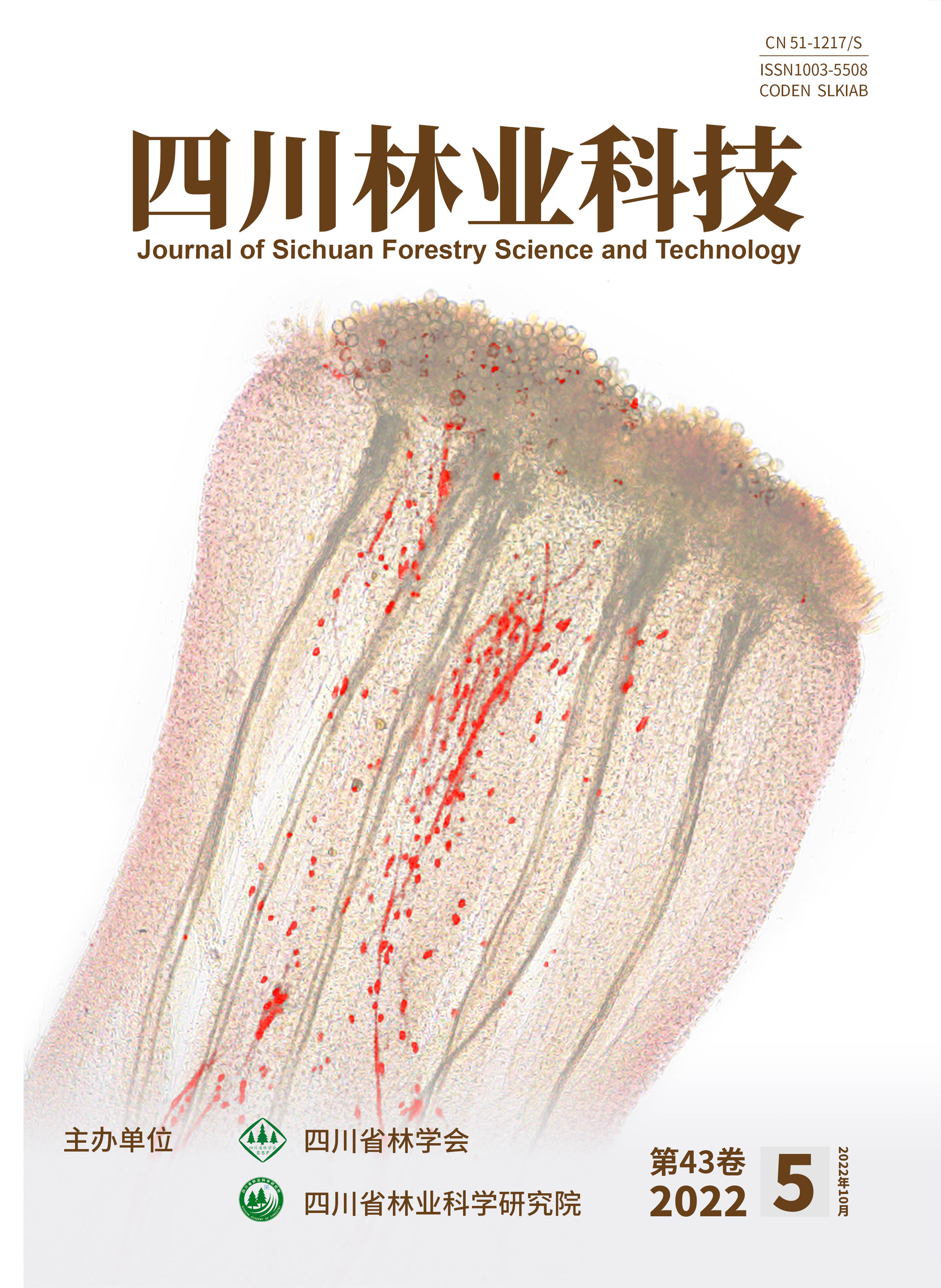




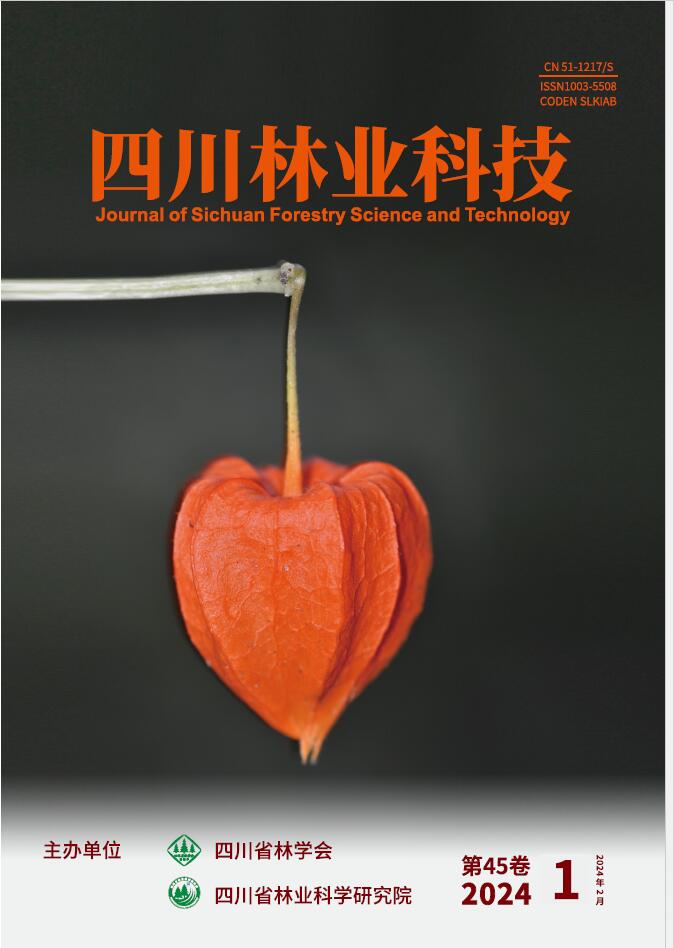
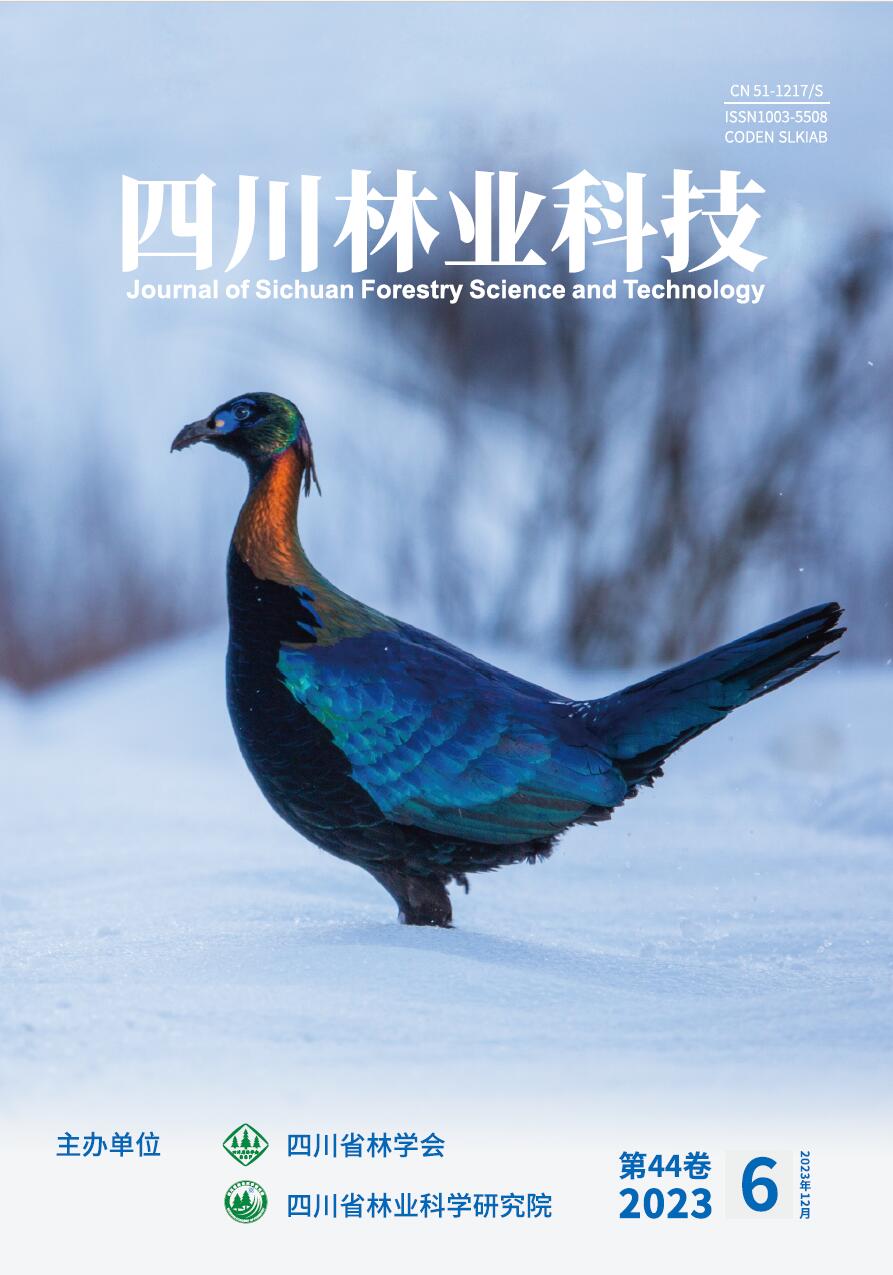
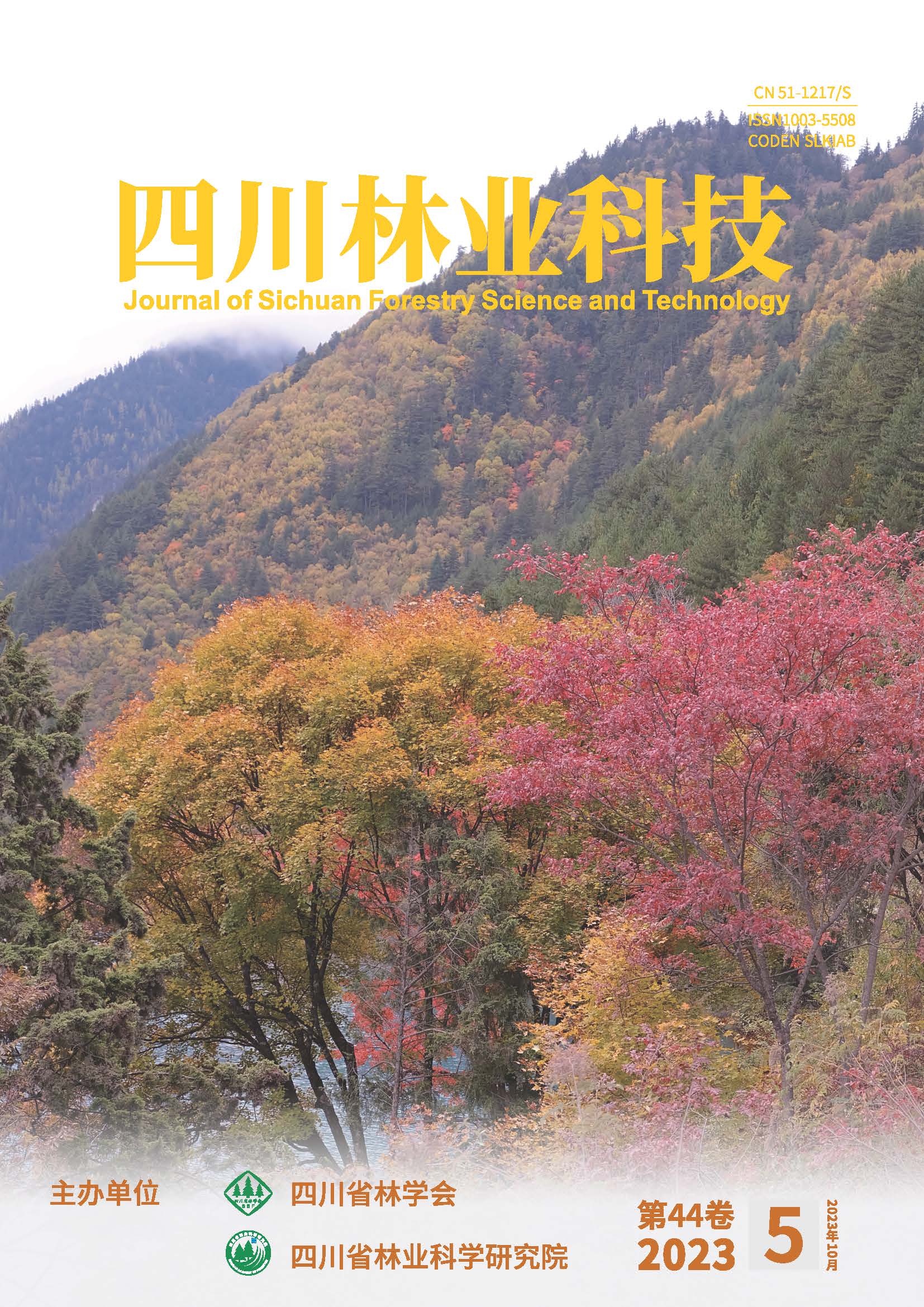
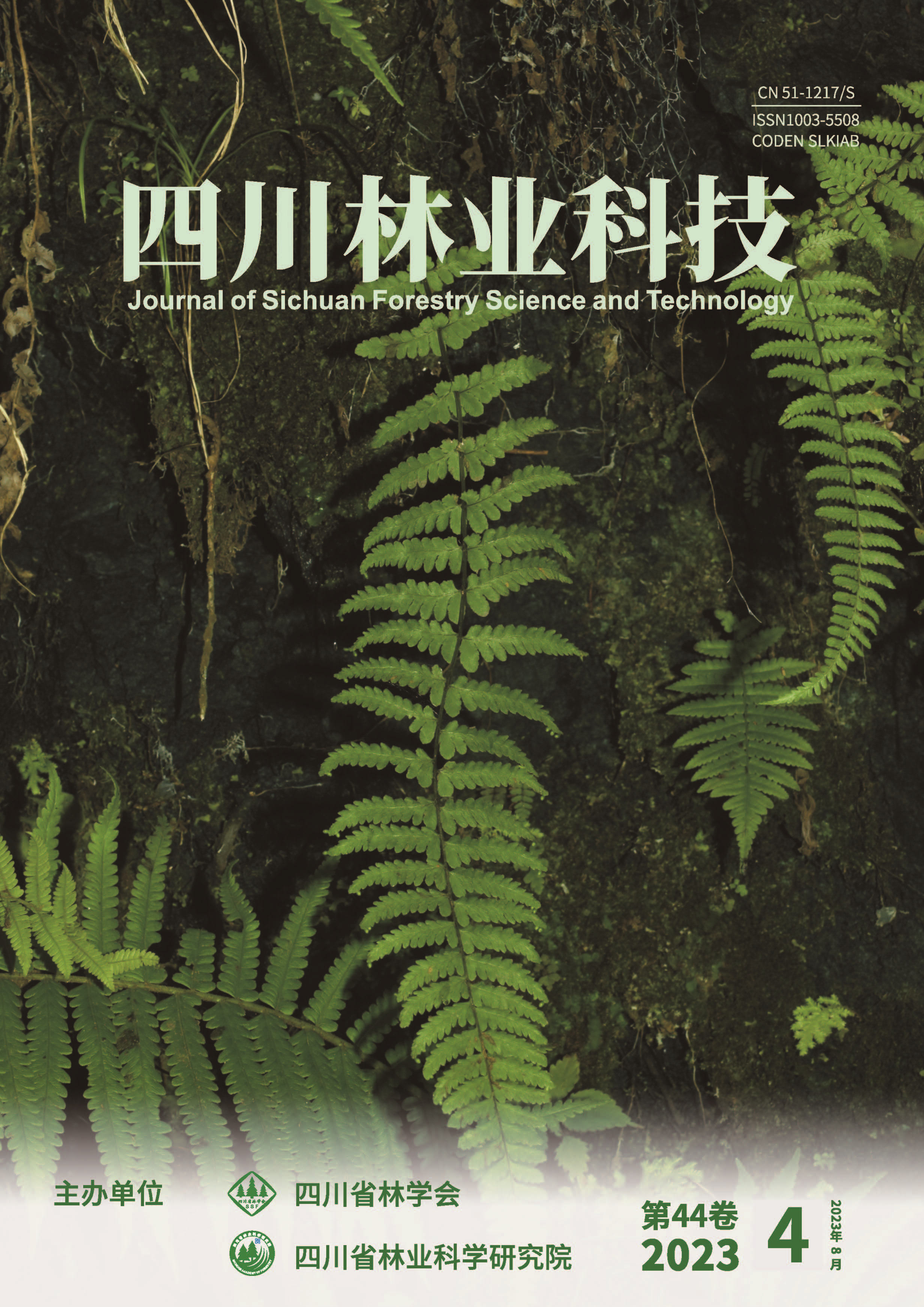
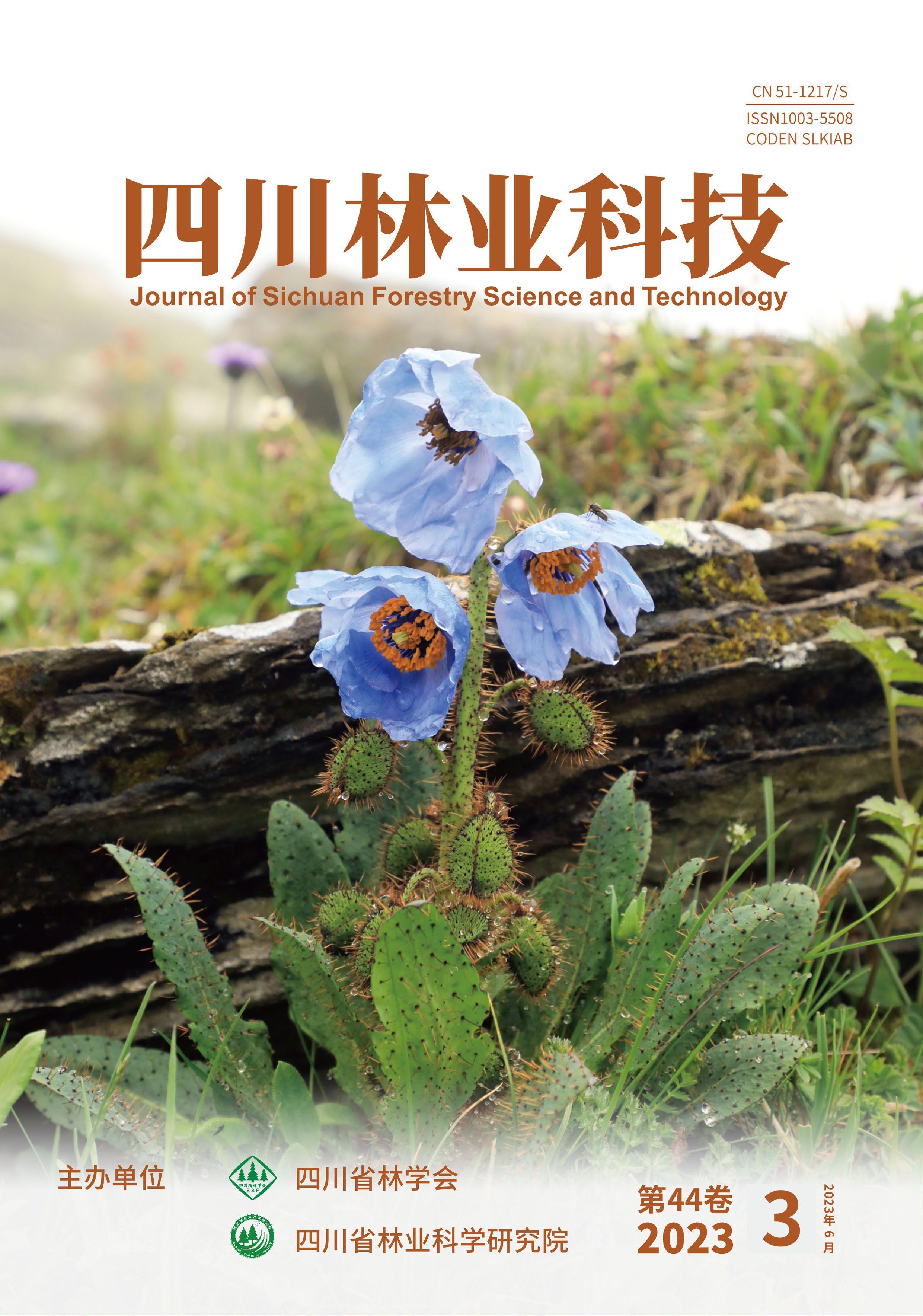
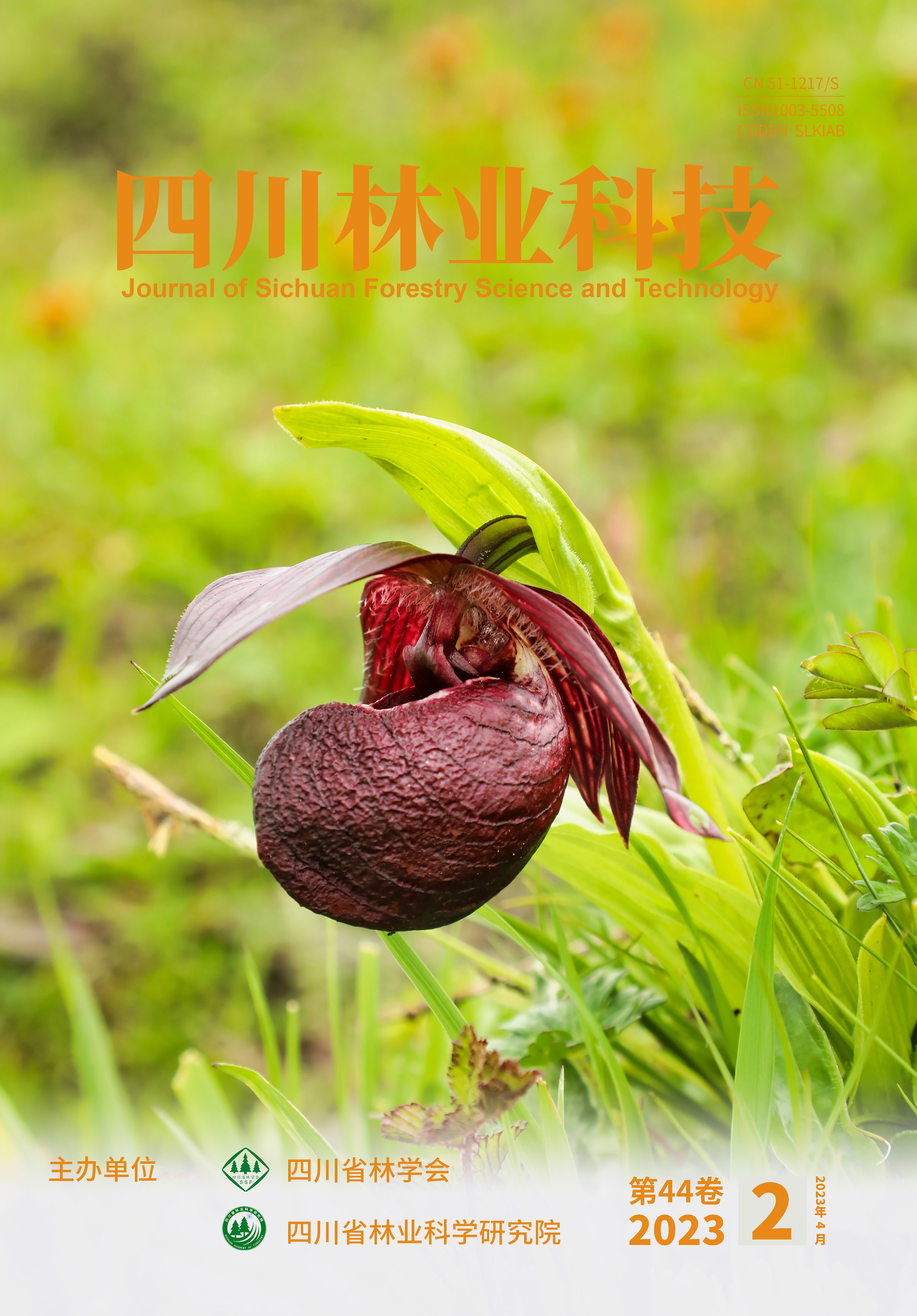
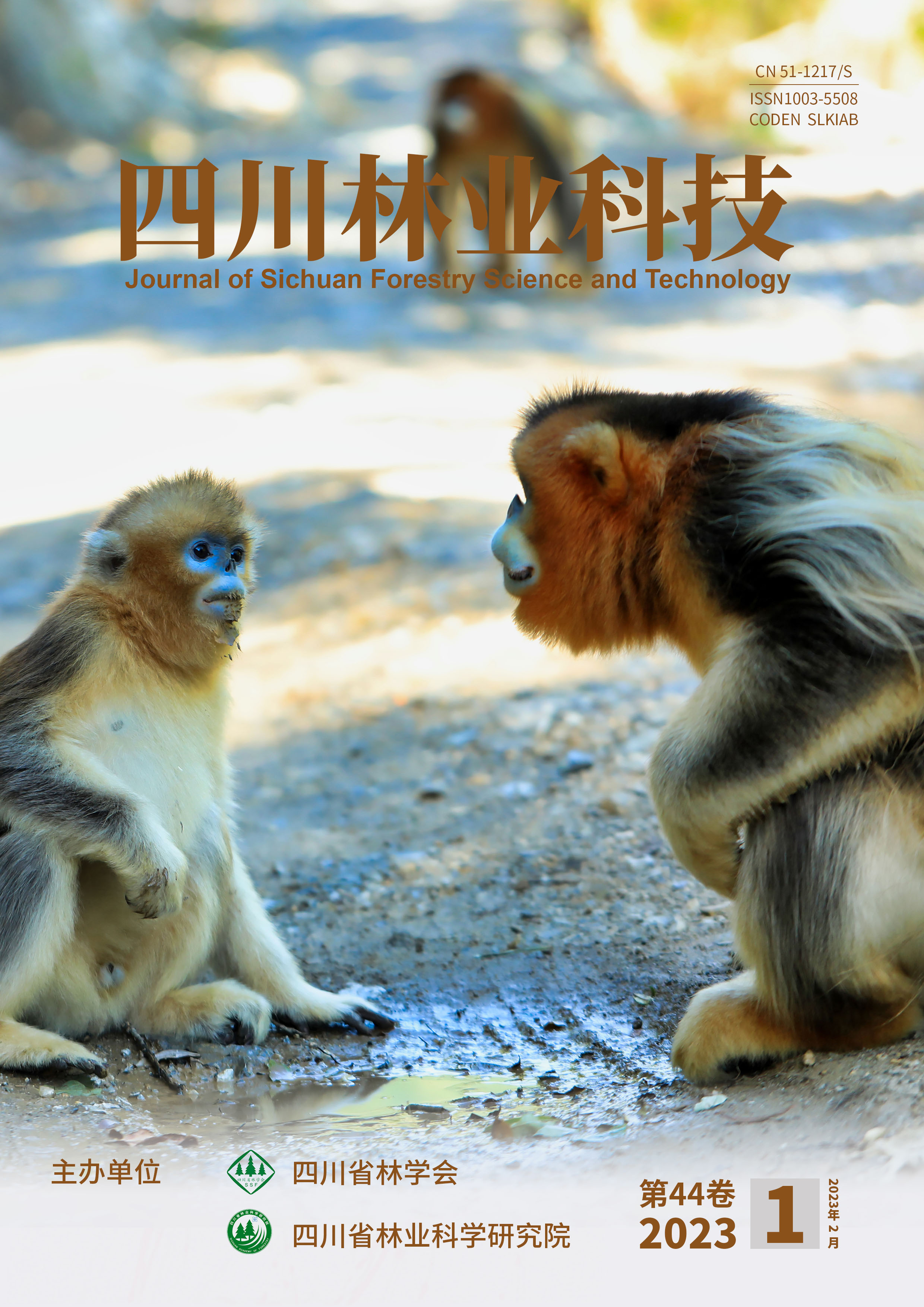


 DownLoad:
DownLoad: